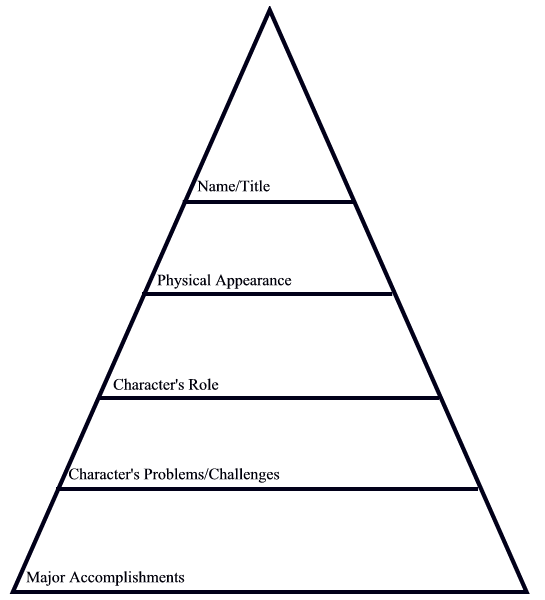How to Develop a Character Graphic Organizer

Analysing characters in plays and novels for a literature class can be exceedingly difficult, especially if it is a work that is brimming over with a large host of characters. However, in order to make sure students pay sufficient attention to every individual character, and are able to understand and process these characters in an organized fashion, teachers can use a character graphic organizer, to give their students the information in an easy-to understand format. While character graphic organizers can also be used to carry out comparisons between characters, the technique is most often used for character analysis.
Instructions
-
1
To begin with, you will need to make sure the board at the front of the class is clean, and you can easily begin the process. While this can also be given as a homework assignment or group project, it is best to do one as a classroom activity to begin with, so students get the general idea. Explain the gist of what a character graphic organizer is, and encourage students to chip in with suggestions on what to include in it, and how to organize it.
-
2
The most common form for a character graphic organizer is a pyramid. Draw a large pyramid on the board, and divide this horizontally into five sections. In the top-most section at the peak, write down the name of the character in bold, capital letters. Then, in the second section, begin listing his/her physical attributes and features. Go through the novel/play, and have students chip in to complete this section. The character might have some disfigurement, some striking feature, or a particular article of clothing (like a hat) that s/he is well known for.
-
3
The third section of your pyramid will need to include the role the character plays in the book. Is s/he the protagonist or the antagonist? Is the character round, or flat, a major character or a minor character? Is s/he a hero, a mentor, or a foil to the main character, etc? Follow this up with the fourth section, where you will need to talk about the problems and challenges the character faces in the book – whether s/he is out for revenge, helping the main character, or involved in conflict with another character, etc.
-
4
Finally, in the fifth and final section, you will need to list the resolution or the outcome of the character’s struggles/conflict – i.e. his/her accomplishments. Does s/he triumph over an adversary, make it big, or fall into evil – in short, what end does the character meet? Your character graphic organizer will now be complete – copy it neatly onto a sheet, get photocopies, and distribute these among the students.







